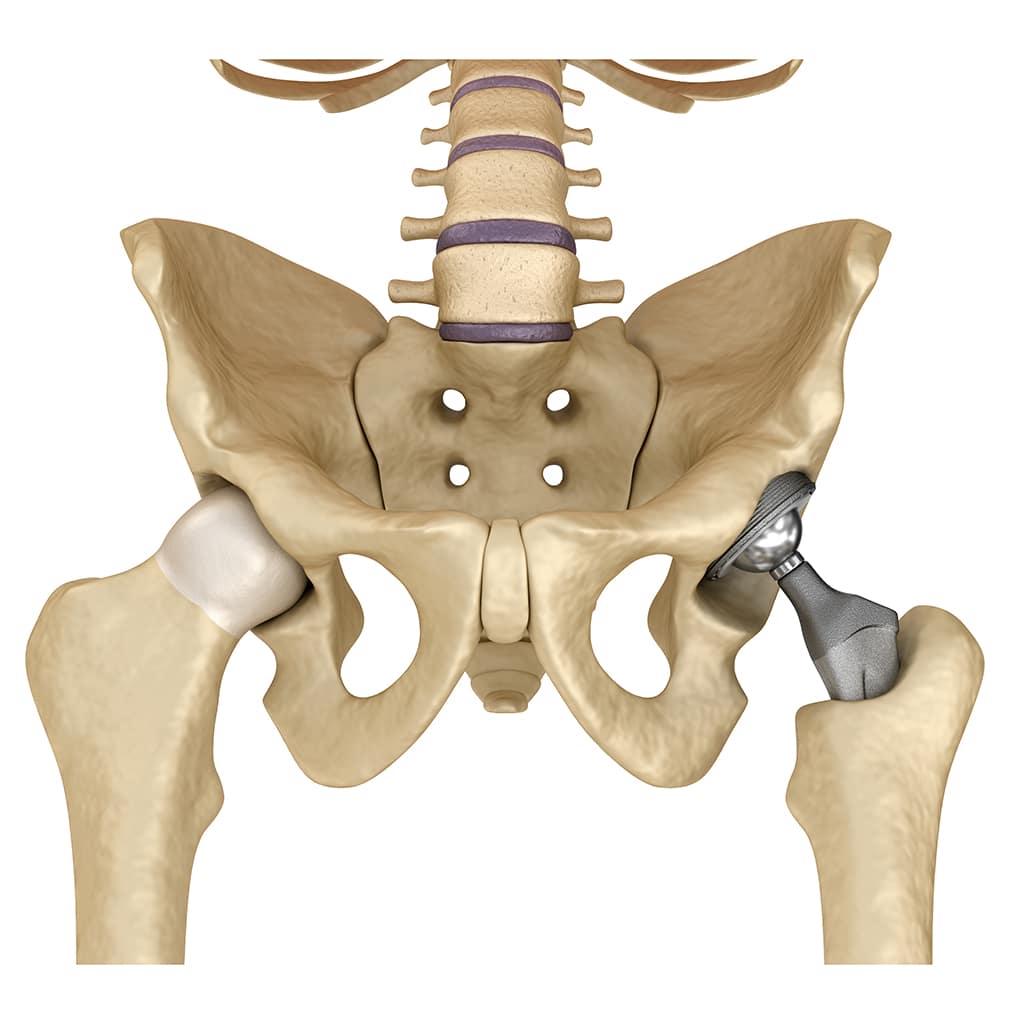Hip pain
A sore hip does not only occur in older people. In fact, there is not always wear and tear on the hip, although hip osteoarthritis is one of the most common causes of hip pain. In younger age, there is usually a bursitis or tendon problem on the outside of the hip.
Osteoarthritis of the hip
Features
- Pain in the groin
- Pain and stiffness when getting up from a bed or chair that lessens with exercise
- Pain while walking
- Pain with lying on the hip
Cause
In osteoarthritis, the cartilage covering the hip head and socket is worn out. It is then no longer thick enough to handle the shock load properly. In addition, a process called osteophyte formation occurs: these are a type of bone spikes that form at the edges of the joints. These can cause the hip's range of motion to be reduced because the space in the joint becomes smaller.
Treatment
Treatment by the physical therapist will consist of a combination of muscle strengthening and stabilizing exercises of the surrounding muscles. By strengthening these muscles, forces acting on the joint are better absorbed. The walking pattern will also be examined and adjusted if necessary. At Fysiotherapie de Jong we work in the treatment of hip and knee osteoarthritis according to the GLA:D program. When an exercise program does not produce the desired effects, an injection can be used or, in extreme cases, a prosthesis can be used.
Hip prosthesis
Characteristics and treatment
The hip replacement, or new hip, is placed during surgery. This involves replacing both the hip head and the hip socket. The new head of the hip is inserted into the shaft of the femur and the socket into the pelvis. This forms an entirely new joint. On average, rehabilitation after hip replacement takes 3-9 months.
Bursitis or tendon problem
Features
When the symptoms are on the outside of the hip, it is not caused by wear and tear of the joint. The outer side of the hip will be painful to the touch, while lying on it and while exerting force with one leg (e.g. climbing stairs). Important hip muscles are attached in this area, and a bursa is always present near the tendon of these muscles. So in this region, the pain can be caused by a problem with the tendon (tendinopathy) or bursitis. These two are similar and are often confused with each other. Because we can visualize this with ultrasound, we can make this distinction better.
Cause
The cause of this type of complaint is decreased stability of the hip. That is, during loading on one leg, you sink just a little bit through your hip. This causes the protruding part of the hip to press against the tendon and bursa on the outside. The resulting friction can damage the quality of the tendon or inflame the bursa.
Treatment
Initially, the source of the pain will be addressed, the inflamed bursa or impaired tendon quality. This is done by treating surrounding muscles and the tendon locally. When pain permits, an exercise program will be started to improve the stability of the hip and increase the load capacity of the affected tendon tissue.
Research and treatment
The physical therapist will assess your symptoms through an interview and focused examination. Then the diagnosis will be discussed with you and a personalized treatment plan will be drawn up.
Cost
Physical therapy is covered by your supplementary insurance. Don't have supplementary insurance? Then we apply the following rates.
After surgery, from the 21st time, treatment is reimbursed from basic insurance (as long as medically necessary up to one year after surgery date).
For Coverage osteoarthritis hip click here.
GP/specialist referral
Would you like to make an appointment regarding any of the above complaints? You can contact us directly.


